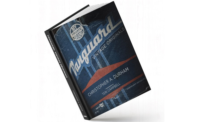Downsizing on the way up-but at what cost to brands?
Brands are struggling for ways to manage costs. But instead of creative methods, many have been reducing product contents and, frequently, retooling packaging so the tactic goes under shoppers' radar.


Brands should look for creative
solutions to manage costs. Reducing the amount of plastic in its
bottles by 30 percent, Nestle Waters cut material costs and provided
consumers a "green" benefit as well.
Ice cream containers are subtly being tapered. Cereal boxes are getting slimmer. And the pushup on the bottom of peanut containers is getting, well, pushed up. Brands are struggling for ways to manage higher material, commodity and energy costs.
But instead of creative methods, many have been following a decades-old practice of downsizing their products: reducing product contents, maintaining the same price point and, frequently, retooling packaging so the tactic goes under shoppers’ radar.
“Downsizing is not a new option,” said Todd Hale, senior vice president of Consumer & Shopper Insights for The Nielsen Company. “We’ve seen [it] over the last few years in a number of categories, including ice cream, cereal, candy, salty snacks and paper products.”
To be fair, some manufacturers have been transparent about the change. Wrigley, for instance, made an announcement that it is rolling out its gum brands in 2009 in new envelope-style packaging that will contain 15 sticks instead of 17.
But many manufacturers have been less than forthcoming.
“The idea of taking product out and letting the consumer think it’s the same reeks of ‘I don’t know how to innovate and I can’t justify my price point’,” cautions Peter Clarke, CEO of Product Ventures, a brand development firm in Fairfield, Conn.
It’s unclear exactly how many manufacturers are, in fact, downsizing products and packaging. David Schawk of Des Plaines, Ill.,-based Shawk told the Wall Street Journal in August that up to five percent of grocery products are shrinking, a level he called unprecedented. Other indications are that the number may be closer to 30 percent.
Regardless, it seems the tactic is gaining steam among brands as the economy continues its nosedive. And critics say there are pitfalls in downsizing and what amounts to a short-sighted move.
“Consumers trust manufacturers to provide reliable products at competitive costs in exchange for their hard earned money,” says Clarke. “The downside of downsizing is that you’re letting down consumers who trusted you.”
What’s worse is that most shoppers only discover a package has been downsized once they get home, when the product doesn’t last as long or doesn’t serve as many as they counted on. Making a consumer feel “tricked’ is never a good strategy, but especially dangerous at a time when budgets are tightening, shoppers are spending more carefully and faith in food and other consumer products is being eroded by safety concerns.
“Skimpy” peanut butter. Brands pursuing such a strategy should understand that risk and the probability that any downsizing is likely to be uncovered by shoppers, consumers or even bloggers.
Edgar Dworsky, a former Massachusetts Assistant Attorney General, is a consumer advocate who has recently been calling out brands and detailing their downsizing techniques on his blog, www.mouseprint.org.
Dworsky has even taken to calling Skippy peanut butter “skimpy” peanut butter after the brand shrunk its jars from 18oz to 16.3oz. With a ruler in tow, he noted how the concave portion on the bottom-the pushup-had been pushed in an additional half-inch on the new jar, allowing the brand to eliminate about three tablespoons of product while keeping the pricing the same and the package footprint (and consumers’ perception of servings) intact. It’s the type of tactic that, once discovered-or “outed” in Dworsky’s case-is likely to inflame consumers.
Cost of goods and other threats. So why are so many brands engaging in such moves? It’s no secret that prices for commodities and raw materials have been on the march for some time now, putting greater pressure on manufacturers. Downsizing products has been a quick fix for CPG companies trying to maintain profit margins by subtly passing the costs along to consumers.
The private label threat is also growing stronger. Sales of store-brand products have increased 10 percent in the past year to more than $81 billion, according to The Nielsen Company. The rise is attributed to the fact that consumers have been more accepting of store brands as the economy has gotten tougher, and-thanks to Safeway, Publix and Target-that many are seeing retail labels as brands in their own right.
Creative solutions. But, rather than offer less product for the same price and hope that consumers don’t switch to a lesser-priced brand, aren’t there more creative marketing approaches a national brand can take?
“To defend their market share during these tough economic times, national brands need to stress their unique advantages and focus on what matters most,” says Product Ventures’ Clarke. “Get out of comparative pricing with store brands and change the game with something that’s truly valued added.”
For instance, think how a smaller pack size can meet a consumer need. The recent crop of portion-controlled packaging is a good example. Marketed to weight-conscious consumers (as a solution for the obesity epidemic), smaller packages with pre-portioned snacks have successfully encouraged consumer spending because shoppers see the smaller packaging as a value, and a solution to help monitor their calorie intake.
“It demonstrates a reason for changing the packaging size,” says Clarke. “It’s not a trick.”
Another approach could be lightweighting packaging. Rather than drop product volume, Skippy, for instance, could have taken a page from Nestle Waters’ eco-shape bottle (30 percent lighter than the typical water bottle) and reduced the amount of plastic in its jar to save on material costs. Such a creative solution could also make headway toward sustainability, which most every company is pursuing.
More bulk or “family sized” offerings that offer larger sizes at lower price points are another solution-one that a recent Nielsen survey (see sidebar, below) indicates consumers would broadly accept.
In the end, when your customers are feeling the pinch and are most vulnerable, and when store brands are ready to step in and take your place, it might be more prudent to hold back on downsizing product (or push back on executives pressing for such tactics) and consider other less-risky options. “It’s really a matter of creativity,” says Clarke. BP
Consumers speak out
The Nielsen Company recently surveyed consumers on how they’d prefer CPG manufacturers to cope with rising food costs. Here’s what they had to say:
- Nearly half (47 percent) said they preferred large, economy sizes with lower price points per serving
- Only 17 percent preferred new, smaller pack sizes at lower prices
- And just nine percent suggested CPG manufacturers downsize or modestly reduce the packaging size of products, keeping the price of the product the same.
Other responses included raising the prices of existing items proportionally (8 percent); offering fewer sales (8 percent); offering the same number of sales, but at less of a savings (7 percent); and producing slightly lower quality products, but keeping the price the same (4 percent).
Looking for a reprint of this article?
From high-res PDFs to custom plaques, order your copy today!







